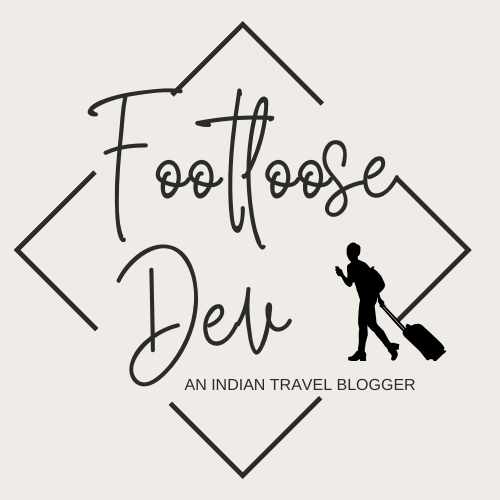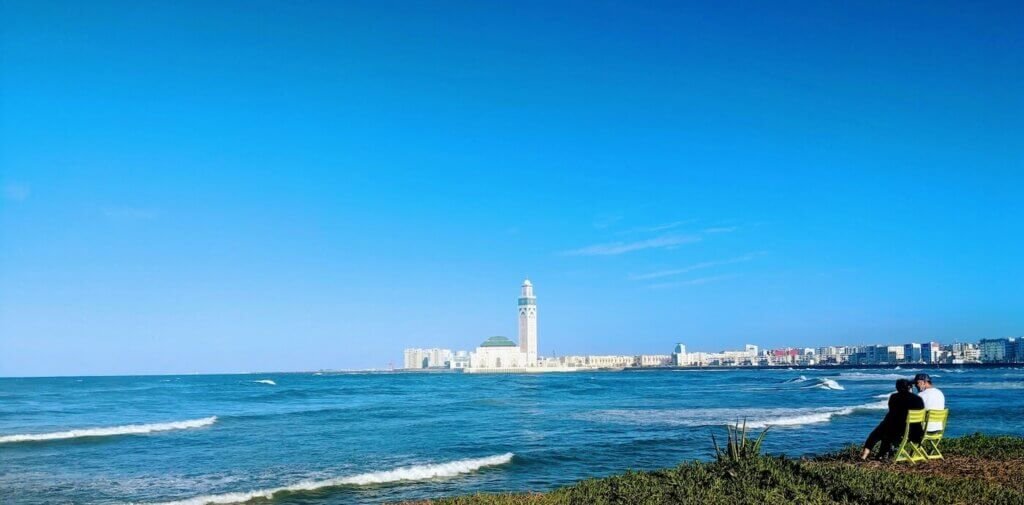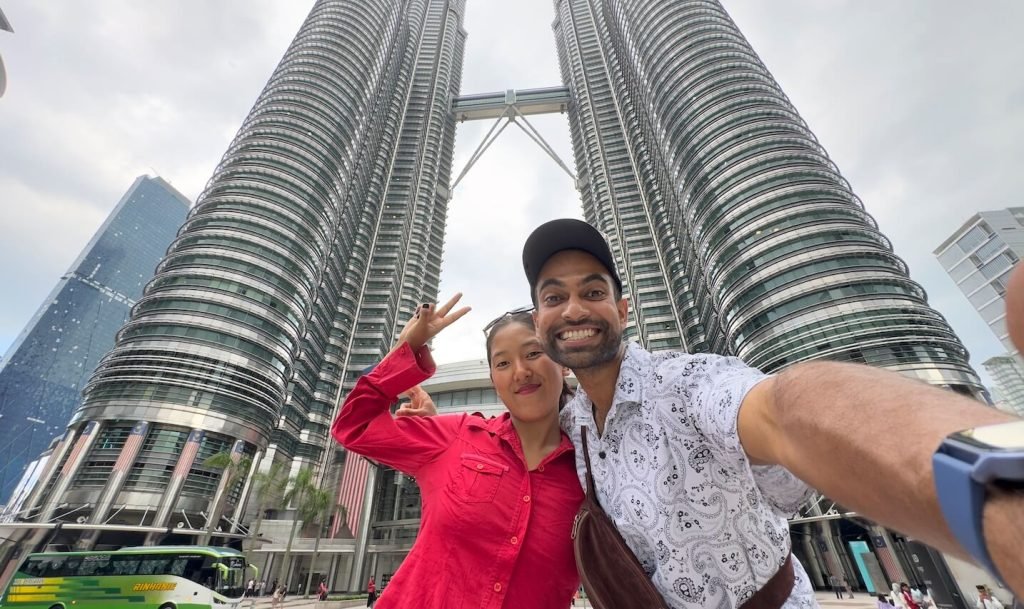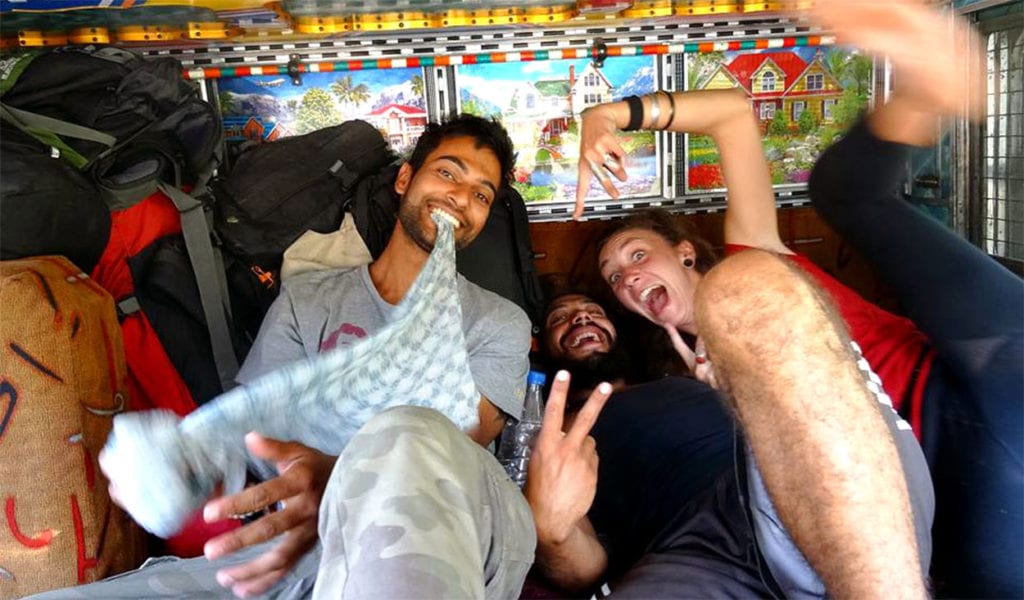Casablanca refuses easy labels. Morocco’s busiest port and financial engine is also a place of alleyway artisans, quiet courtyards, and street murals that bloom on warehouse walls. French Art Deco façades sit beside Neo-Moorish arches.
Elegant cafés overlook the Atlantic while the call to prayer drifts across the wind. The most reliable way to make sense of these contrasts is to slow down and explore on foot. For travelers who want to experience the city’s story through texture and detail, join a Casablanca walking tour.
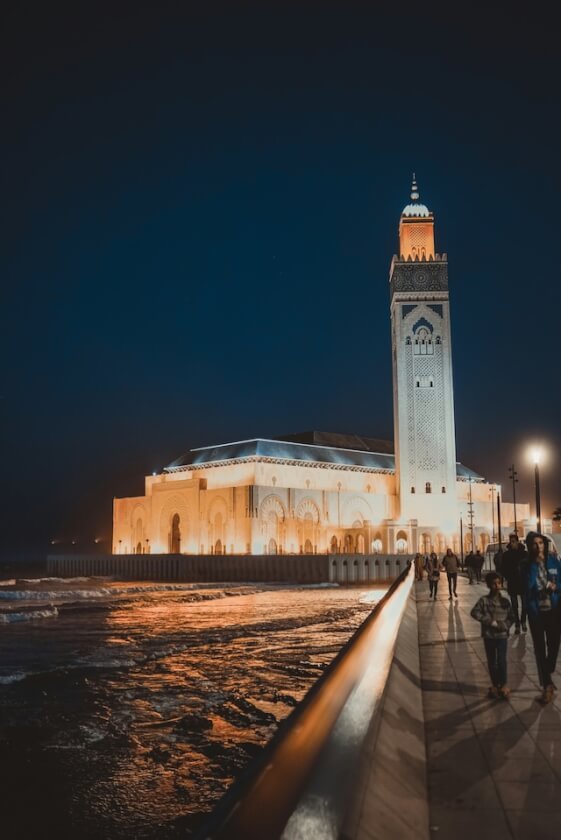
Casablanca – Morocco’s Beating Heart
Casablanca is not the political capital, yet it sets the economic tempo of the country. Cargo ships queue at the harbor, finance and tech firms stake headquarters downtown, and creative studios energize former industrial blocks. Cultural life thrives in galleries, independent cinemas, and music venues that give a platform to new voices. Unlike cities that are framed almost entirely through their medieval cores, Casablanca shows Morocco’s present and future without hiding its past. The result is a live conversation between eras that plays out at street level.
This is a city built on meeting points. Africa meets the Atlantic. The Arab world meets Europe. Tradition meets experimentation. Walk two blocks and the scene can flip from tiled courtyards and spice stalls to glass towers and design showrooms. That juxtaposition is the essence of Casablanca’s character.
Walking in Casablanca is a great experience. It’s almost like walking in old towns of Europe like Prague or someplace equally beautiful.
Traces of Yesterday – The Historical City
The old medina, modest in scale by Moroccan standards, concentrates centuries of craft and community. Narrow lanes carry the aromas of cumin and mint. Copper beats softly under the hammers of metalsmiths. Textile shops hang bursts of color that catch the ocean light. There are mosques with carved wooden doors and, tucked away, synagogues that speak to a long history of coexistence. Casablanca has always been a crossroads, and the medina makes that clear without speeches or signs.
A different past appears in the early 20th century city that grew under the French protectorate. Urban planners and architects used Casablanca as a laboratory. Whole districts emerged with Art Deco elegance – curved balconies, ribbon windows, geometric railings – layered with local motifs. The Neo-Moorish civic buildings added zellij tile, stucco carving, and cedarwork to European proportions. Many façades still carry their original glamour, not as museum pieces but as lived-in addresses above bakeries and bookstores. The Sacré Coeur Cathedral punctuates the skyline with a white silhouette that fuses Gothic inspiration with modernist clarity. These streets tell a story of ambition and design experimentation that still shapes how the city moves.
Today’s Casablanca – A City in Motion
Modern Casablanca hums with big city momentum. The business districts point to Morocco’s role as a bridge between continents. Co-working spaces fill with startups, and art collectives convert old depots into studios and small theaters. Conversations about sustainability, public space, and social change spill from conferences into cafés. Community groups run coding classes and language meetups. Street art claims walls and turns them into open-air galleries. It is common to finish a quiet hour in a mosque courtyard and then, five minutes later, pass an installation or a DJ soundcheck. The coexistence is not accidental. It is the daily pattern of the place.
For visitors, this movement translates into variety. One route can weave religion, food, architecture, and contemporary culture without ever feeling forced. That is the strength of a well-designed walking tour – it connects dots that are already close together.
What to See on a Casablanca Walking Tour
A curated walk brings the city’s contrasts into focus. Key stops often include the following, but the value lies in the sequence as much as in each site:
- Hassan II Mosque
One of the world’s largest mosques rises directly from the Atlantic edge, its minaret reaching 210 meters. The structure is a showcase of Moroccan craftsmanship – cedar ceilings, carved plaster, marble, and hand-cut tile – and also a statement of modern engineering. The ocean setting frames Casablanca’s relationship with the sea and with scale. - Old Fortress Walls and Medina Gateways
The remains of fortifications do more than decorate photographs. From the ramparts, it is easy to imagine the earlier city, built for defense and trade. A gentle descent through the gates leads into the medina, where daily rhythms resist the rush of modern life. - Central Market
A loud, fragrant chapter of the route. Seafood on crushed ice, piles of oranges, and tidy pyramids of spices announce themselves before you turn the corner. Tastings are common – try oysters or sea urchins at a casual stand, then follow with mint tea. Markets often reveal the city more honestly than monuments. - Art Deco Boulevards
Cinema marquees with stylized lettering. Apartment blocks with sunburst grills and corner rotundas. Banks and former hotels that used geometry as brand identity. The Art Deco layer is one of Casablanca’s surprises for travelers who expect only medieval alleys and modern glass. - Multifaith Landmarks
Synagogues and churches lend nuance to a city that many outsiders assume is religiously uniform. Their presence anchors conversations about community ties, migration, and memory. - Corniche and Oceanfront
A walk along the water balances the urban sequence with sea air and horizon. Here, cafés face the Atlantic, families gather at sunset, and the city exhales.
These highlights form a frame. Within it, guides point to details that might be missed alone – inscriptions above doorways, a hidden courtyard with fountains, a craftsman’s workshop where tools have not changed in generations, a café that preserves Art Deco interior woodwork under a new menu board.
Sample Route – How a Half Day Might Flow
A thoughtful 3.5 hour loop can look like this:
- Morning meet near the Hassan II Mosque. Walk the outer esplanade, pause at the ocean overlook, and discuss the building’s artistry and symbolism.
- Follow the promenade toward the old city. Stop at a small fort bastion for views.
- Enter the medina through a quieter gate to avoid the busiest lanes. Step into a spice shop for a quick primer on ras el hanout, preserved lemons, and saffron.
- Cross to the Central Market for a tasting break – oysters, sea urchins, or fresh juice – and a short note on Casablanca’s food supply chains.
- Continue to the Art Deco grid. Observe façades and original shopfronts. Compare decorative vocabulary – sunbursts, chevrons, palm fronds – and how local artisans adapted them.
- Finish near the Sacré Coeur Cathedral or in a small square lined with cafés. From here, it is easy to linger for lunch or continue independently.
A longer day that adds car support can extend into the Habous Quarter, the Mahkama of Pacha Palace when open, Notre Dame de Lourdes with its stained glass, artisan workshops, and a local neighborhood bazaar with little tourist pressure.
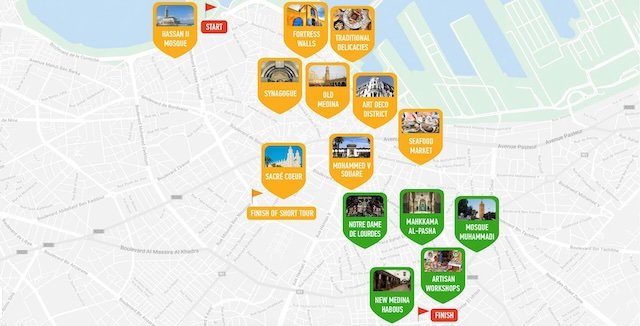
Practical Advice – Make the Most of Your Walk
- Best seasons
Spring and fall bring mild temperatures and softer light that flatters photographs. Summer can be warm in the middle of the day, but coastal breezes help. Winter is generally mild and walkable. - Distance and comfort
Expect 3 to 5 kilometers on a standard half day. Wear supportive shoes with grip for tiled or uneven patches. A small bottle of water and sun protection are sensible even on breezy days. - Etiquette and photography
Modest clothing is respectful, especially around religious sites. Ask before photographing people, and avoid shooting into prayer spaces. In markets, a smile and a nod go a long way. - Food hygiene
Choose busy counters with high turnover for seafood tastings. Follow your guide’s recommendations. If you have allergies or dietary restrictions, mention them at the start so tastings can be adjusted. - Moving between points
Most itineraries are fully walkable. If mobility is a concern, short taxi hops can bridge the oceanfront and medina or save steps in the Art Deco district without losing the narrative. - Safety sense
Central areas are active and patrolled. Normal big-city awareness applies – keep phones and wallets secure and avoid flashing valuables. Night strolls are pleasant along the Corniche and main boulevards, but stick to well-lit routes.
Choosing the Right Walking Tour – What Matters
- Storytelling over checklist
A strong tour connects places into a coherent arc. Look for descriptions that explain how the mosque, the medina, and Art Deco avenues relate rather than simply listing stops. - Group size and pacing
Small groups feel conversational and allow time for questions and spontaneous detours. Private options adapt to specific interests – architecture, food, photography, or social history. - Local expertise
Guides who live in the city can translate small details – a hand gesture in a market stall, a proverb on a tile, a menu written in chalk – into context that enriches the walk. - Access and timings
Certain interiors open only at set hours. Experienced guides plan around prayer times and local schedules to avoid closed doors and crowded bottlenecks.
Beyond the Walk – Where to Go Next
Casablanca makes an excellent launch point for the rest of Morocco. Several day and overnight options pair well with a walking tour:
- Rabat
An easy train ride north offers a calmer capital with boulevards, gardens, and coastal kasbah views. It contrasts nicely with Casablanca’s scale. - Fez
Medieval lanes and scholarly tradition create a deep dive into heritage. Visiting after Casablanca helps highlight how different Moroccan cities carry different eras. - Essaouira or Oualidia
Coastal escapes for seafood, sea air, and relaxed tempo. Essaouira’s wind and ramparts bring a bohemian mood. Oualidia’s lagoon is known for oyster farms and tranquil water. - Interior detours
If time allows, routes east and south lead toward imperial cities, mountain passes, and desert edges. Casablanca’s rail and road links make connections straightforward.
What to Taste Along the Way
Casablanca’s food scene blends market freshness with contemporary twists:
- Seafood
Oysters and sea urchins at the market are classics. Grilled sardines near the port are simple and perfect. - Street staples
Msmen pancakes, baguette sandwiches that nod to French memory, and bissara fava bean soup in cooler months. - Sweets and tea
Almond pastries and mint tea are everywhere. Seek out a café with an Art Deco interior to layer taste with time travel. - Modern casual
Neighborhood bistros reinvent traditional dishes with lighter touches. Ask your guide for places that balance authenticity and comfort.
Responsible Travel – Leave a Good Trace
- Support small businesses
Buy directly from artisans when possible. Many workshops rely on modest purchases to keep skills alive. - Reduce plastic
Carry a reusable bottle when your accommodation can provide refills. Decline extra bags in markets. - Dress and behave with respect
Simple gestures – covered shoulders in sacred areas, greetings in Arabic or French, patience in lines – build goodwill. - Photography with care
A quick request before portraits protects trust and privacy. Some vendors prefer no photos of their stalls. Accept that gracefully.
Why Walk – The Case for Slowing Down
Casablanca rewards walkers because its identity hides in small seams. An inscription above a door explains a guild’s origins. A tile pattern repeats from a civic building to a family courtyard. A skyline view aligns minaret and modern tower to draw a straight line between tradition and ambition. On a bus or in a car, those threads slide past as scenery. On foot, they tie together into a story.
That is the deeper value of a guided walk. It is not about covering the most ground. It is about seeing how each piece speaks to the next. The mosque is grand precisely because the medina still breathes. The medina feels timeless because the modern city surges a few blocks away. The Art Deco blocks fascinate because their European bones learned to wear Moroccan ornament. The ocean makes everything make sense.
Conclusion – A City Between Eras
Casablanca is a dialogue rather than a snapshot. Medieval craft meets modern commerce. Spiritual quiet meets social energy. Design history meets new murals overnight. The city asks visitors to hold two truths at once – a respect for heritage and an appetite for change. A walking tour offers the right pace and perspective to hold both without forcing a choice.
From the Atlantic terrace of the Hassan II Mosque to the perfume of the spice lanes, from cinema façades with sunburst ironwork to markets that feed half a metropolis, the city opens itself step by step. Travelers who come only for flight connections miss a chapter that reframes Morocco as more than postcard scenes. Those who stay to walk discover a living bridge between past and future. In Casablanca, that bridge is the city itself – and it is best crossed on foot.
